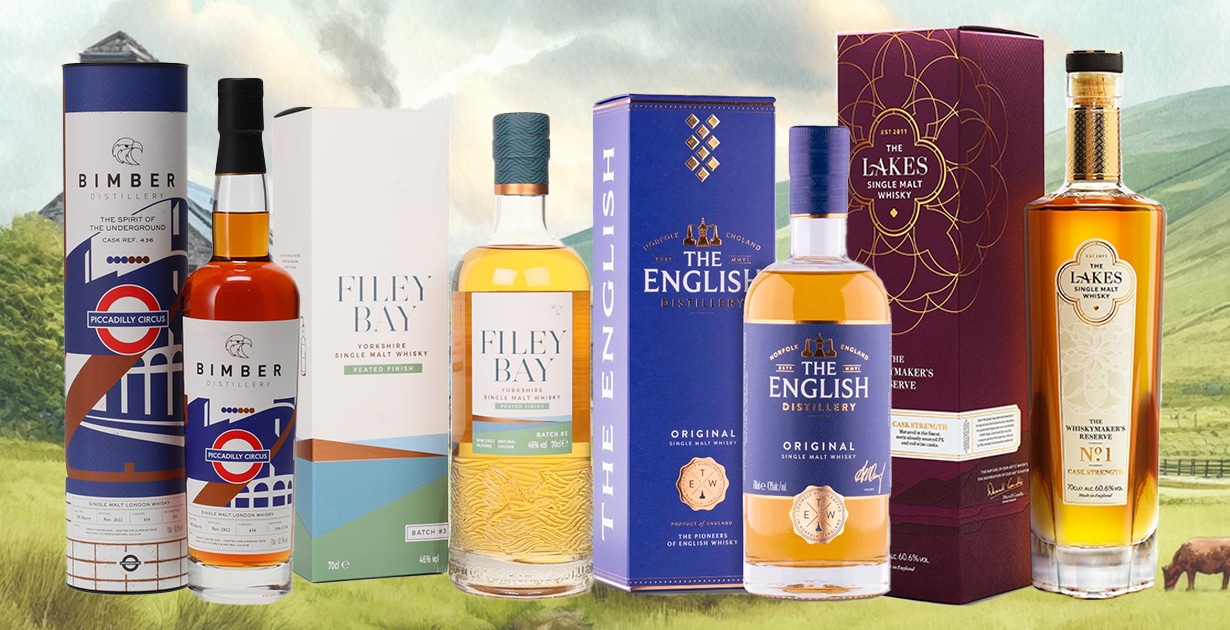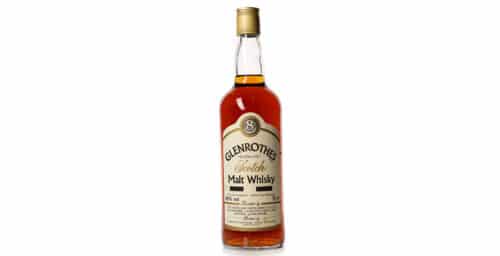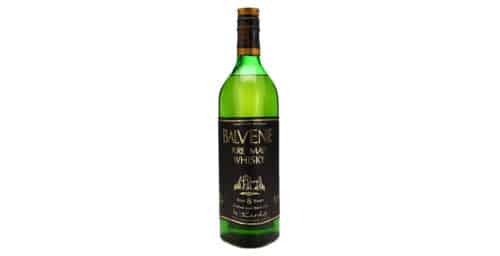The growth of English whisky over the past decade has been quite the force to be reckoned with. We now have 49 distilleries, with 45 currently up and running; the category is thriving.
We all remember when The Lakes Distillery won Best Single Malt in the World for Whiskymaker’s #4 in 2022. More recently, with The English Whisky Distillery Sherry Cask being named World’s Best Single Malt at the World Whiskies Awards in 2024, the palate for English whiskies is clearly very strong.
But what is the path that English whisky has to forge? The category has less restrictive regulations than scotch whisky, and therefore the ability to experiment. Will this opportunity for experimentation make for a chaotic, unregulated section of the market? Or is it a time for whisky to open up the books on what can be achieved with looser regulations?
What Are The Rules Around English Whisky?
Well, currently there is no set of rules defining what English whisky is. However, all producers follow EU guidelines that define what a whisky can be, along with standard whisky guidelines.
Those guidelines are below and apply to all whisky currently made in Scotland, Wales, England, and Ireland.
- Matured for three years in wooden caskets
- Not be sweetened or have additives (with the exception of E150a)
- 40% ABV minimum
- Distillation conducted at less than 94.8% ABV
As of February 14th, 2022, the English Whisky Guild (EWG) submitted to the Department for Environment Food & Rural Affairs an application for a geographical identification (GI) to establish a legal definition of English whisky. This is still awaiting legal approval. Those terms were:
- The whisky must be washed (milled and fermented) in England.
- The whisky must be distilled in England.
- The whisky must be matured in England.
- The grains are from the United Kingdom.
As a result of this GI going forward, the Circumstance Distillery dropped out of the EWG as it believed this would put a barrier in place and would discourage innovation, which is what a lot of smaller English distilleries have built such a successful foundation on. The Circumstance Distillery, in particular, has been led by a “flavour first” approach with multi-grain mashbills. Some of that grain is not necessarily being grown in the UK, and they produce everything but single malt, because as we all know the world is much bigger than single malt whisky.
Notable English Whisky Producers
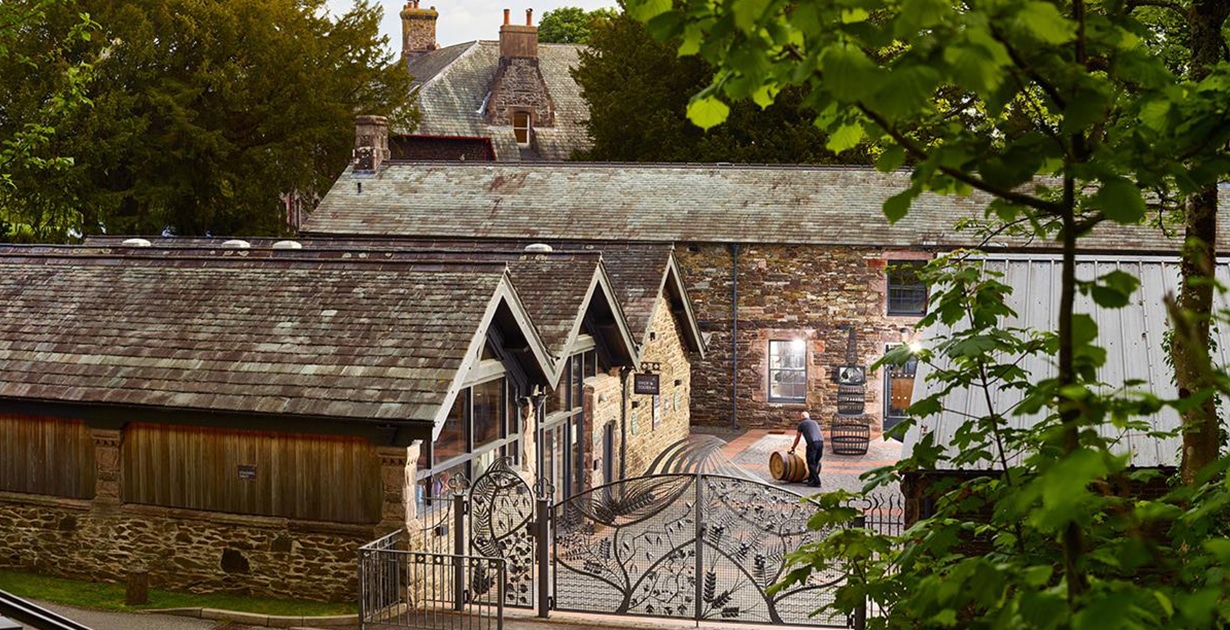
Looking at producers that do make classic single malt and blended whisky, how has this impacted them? Let’s take a look at the two distilleries mentioned in the first paragraph, The Lakes Distillery and The English Whisky Distillery.
We have two classic styles of single malt, mostly double distilled with the occasional triple distilled run (English Whisky Distillery), aged in wood for at least three years and bottled above 40% ABV. This classic style has served them well since the beginning, as it has for The Cotswolds Distillery, Bimber, Henstone, Adnams, and all of the internationally lauded ‘founders’ of the EWG.
Let’s Talk About Stills
The one thing we haven’t talked about is stills. Now, most are double distilling through pot stills, the same as nearly every Scottish single malt you’ll come across. Some distilleries, however, are doing things a little differently.
Here is where we get to talk about The Spirit of Yorkshire Distillery and their fun and experimental product, Filey Bay. This distillery does everything the GI sets out in its purpose. They are a field-to-bottle distillery on the coastal side of Yorkshire with a strong history of brewing prior to being a spirit producer. But the interesting part is they have two of the biggest copper pot stills outside of Scotland, produced by the famous Forsyth’s.
Attached to their spirit stills is a four-plate copper column, giving Filey Bay its distinctive fresh feel, and the labeling of ‘Yorkshire Single Malt’ on the bottle. A very unique style of whisky that still fits within the rules, still allowing itself to stand out amongst an ever-growing crowd.
So whether you choose to use pot stills or column stills, ‘English Whisky’, and indeed the use of ‘Single Malt’ is still something you can put on your bottle.
The Invicta Whisky Charter & The English Whisky Guild
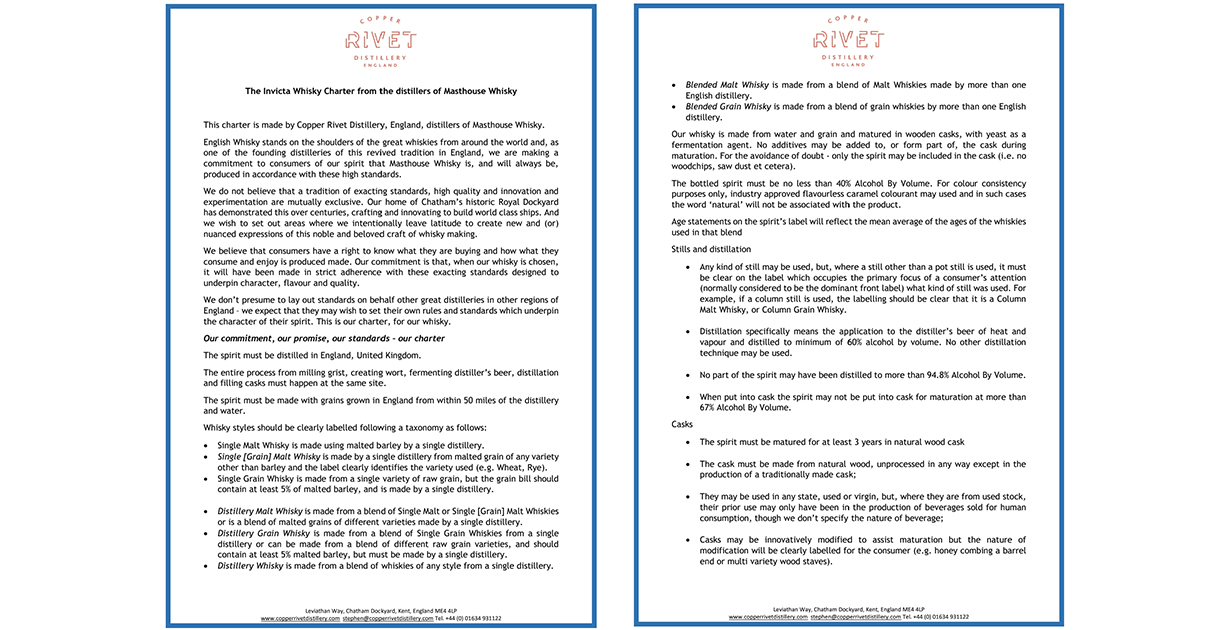
However, if you want to go full rules and regulations then I have attached two pictures of The Invicta Whisky Charter from The Copper Rivet Distillery who produce Masthouse whisky. These folks have been so clear and honest with their guidelines that I think the SWA could honestly learn a thing or two from it. They’re also one of the founding members of the EWG.
Overall, I’m a fan of centralization as it helps to create a better standard of product that inherently makes other parts of an industry more varied, whether that be casks, fermentation times, etc.
Governing bodies can sometimes be seen as bullies rather than protectors. Still, I think not being a part of the EWG won’t negatively impact distilleries like Circumstance, if anything they just get to keep pushing boundaries that they want to break through. If the liquid is objectively good, they’ll never have any issues.
English Whisky Tourism
As a counterpoint, being a member means sourcing locally to the UK, which given the current political minefields of the world is a greater direct benefit to our huge farming community when it comes to local resources. Let us not forget in any way the tourism from the booming English whisky trade. From as far down south as the tip of Cornwall with Pocket Full of Stones Distillery, all the way up to the Ad Gefrin Distillery on the very borders of England and Scotland, the attraction of English whisky to basic enthusiasts has been outstanding, and now that two distilleries have won what you could say is the biggest accolade in whisky, those who have never heard of English whisky will now be able to see
this medals in the press and perhaps book a tour at the distillery and then enjoy the local towns, villages, and cities.
Onwards & Upwards

Overall it is safe to say that English whisky is in a very good space. I recently read in Drinks Retailing Magazine that “A handful of retailers mentioned English whisky as an area with strong potential”. In addition to this, distilleries such as The Lakes, The Cheshire Distillery, Bimber, Adnams, and The Spirit of Yorkshire, plus many others have seen consistent progress and sales in a currently financially troubled world.
So this is a message to the person who is still yet to try anything from an English producer. Get yourself online, or book a ticket to the English Whisky Festival and go and see what all of this is about.
The two liquids that have taken the biggest awards were mostly sherry and red wine matured, a classic flavor profile in Scottish whisky. If you prefer bourbon-driven flavours then Filey Bay has got your back with a wonderfully caramel and citrus-driven house style.
Blended whisky fans, The Lakes again have every conceivable cask finish you could want on The One releases, and Hellstone blended whisky from Pocket Full of Stones is an absolute bargain compared to some craft Scottish stuff.
Even with the GI possibly going through, the ability to innovate is still there, and that sort of freedom will allow English whisky to pursue what the consumer is after.

